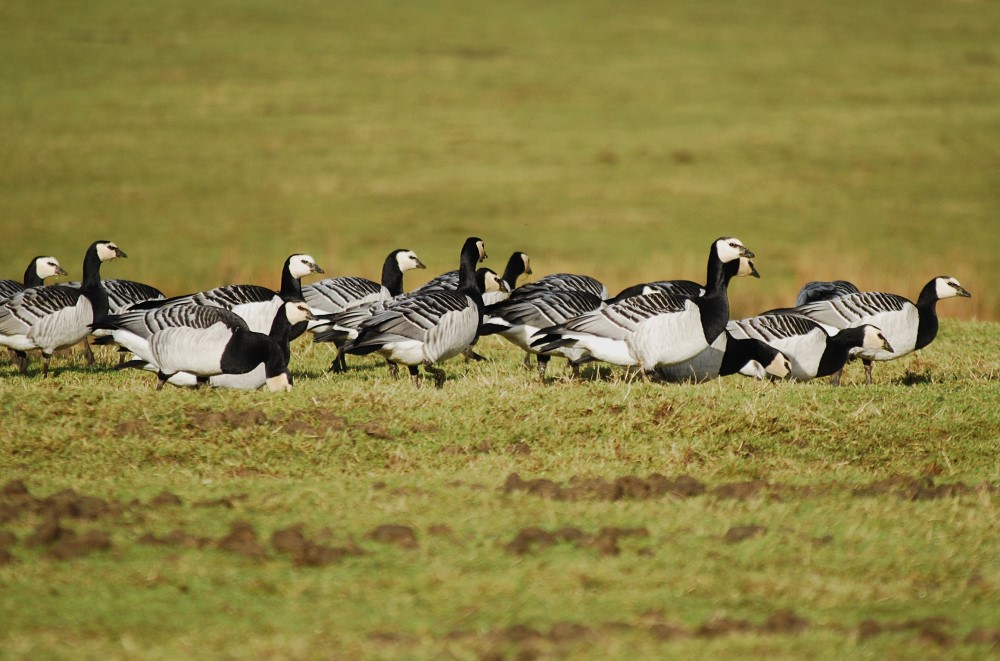Understanding Goose Control Law in Scotland
10 November 2023
Under the Wildlife and Countryside Act 1981 (as amended), all birds are protected by default, but certain species (listed on Schedule 2 of the act) may be killed outside their close season under Section 2 of the act. Pink-footed, Greylag and Canada Geese are the only goose species on Schedule 2 and these three species may therefore be killed or taken between 1 September and 31 January each year (1 September to 20th February in or over areas below the high-water mark of ordinary spring tides).
Due to the increasing problems caused by resident Greylag and Canada geese, these two species can currently also be killed under general licenses that cover the whole year, including the close season. General licenses can be used by land-owners and occupiers (or persons nominated by them) without seeking special permission. The licenses are valid for one calendar year, so it is important to check each year that there have been no changes. There are currently three general licenses which allow control of birds for the following reasons:
- GL01 - To kill or take certain birds for the conservation of wild birds.
- GL02 - To kill or take certain birds for the prevention of serious damage to livestock, foodstuffs for livestock, crops, vegetables and fruit.
- GL03 - To kill or take certain birds for the preservation of public health, public safety and preventing the spread of disease.
The Canada goose is listed on all three of these licenses while the Greylag goose is only listed on GL02. The general licences permit shooting of the listed species as well as egg and nest destruction and pricking or oiling of eggs to prevent hatching. There are certain restrictions on the use of general licenses on some designated sites.
All other goose species (including Barnacle, Greenland White-fronted, Taiga Bean and Brent goose) are fully protected by law at all times. Killing of these species is therefore only possible if a specific license is applied for and issued. It should also be noted that a specific license would be required if a land manager wanted to control Pink-footed geese between February and May as this would be during the close season and this species is not currently on any general license. In recent years specific licences have been issued to kill Barnacle geese on Islay and Pink-feet in Orkney, co-ordinated by local goose management groups and with strict bag limits.
It is important that anyone exercising their right to shoot geese, whether under Section 2 of the Wildlife and Countryside Act or under a general or specific license, can accurately identify the target species as geese often form mixed flocks.
The Wildlife and Countryside Act forbids the sale of wild goose meat. In order to facilitate the control of resident Greylag geese in some of the most badly affected areas, a general license (GL15) allows the sale, advertisement, possession and transportation of Greylag goose meat that have been killed in Orkney, Tiree, Coll and the Outer Hebrides. The meat from these areas may be sold throughout Scotland.
Summary of legal protection of geese in Scotland
| General Licenses | |||||
|---|---|---|---|---|---|
| Fully Protected* | Schedule 2 (W&CA) | GL01 | GL02 | GL03 | |
| Pink-footed Goose | ✔ | ||||
| Greylag Goose | ✔ | ✔ | |||
| Barnacle Goose | ✔ | ||||
| Greenland White-fronted Goose | ✔ | ||||
| Canada Goose | ✔ | ✔ | ✔ | ✔ | |
| Taiga Bean Goose | ✔ | ||||
| Brent Goose | ✔ | ||||
*Control of fully protected species is only possible with a specific license
Paul Chapman, SAC Consulting
Further Information
For further information on goose management schemes:
For further information on general licences:
General licences for birds | NatureScot
For further information on specific licences:
Birds: licences to prevent serious damage | NatureScot
Listen to our Thrill of the Hill episode, where we sit down with Rae Mackenzie from NatureScot for a broad discussion on geese and goose management in Scotland:
Sign up to the FAS newsletter
Receive updates on news, events and publications from Scotland’s Farm Advisory Service

